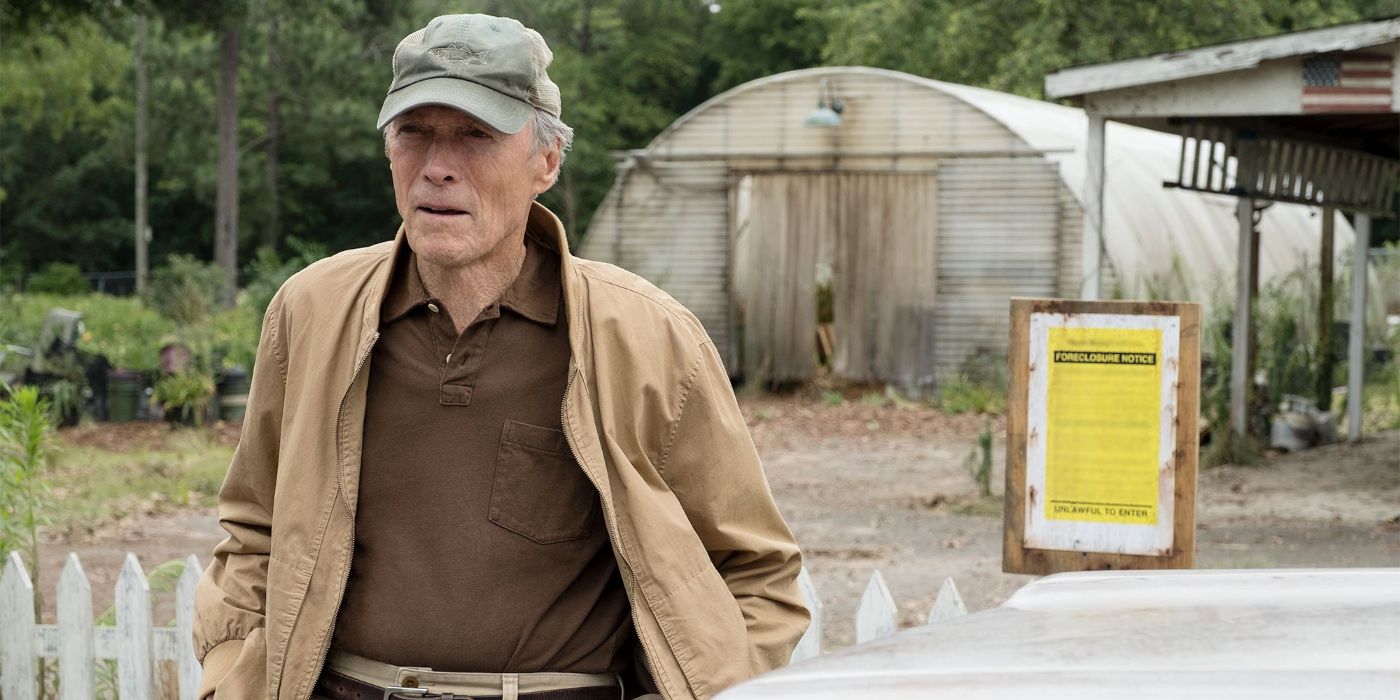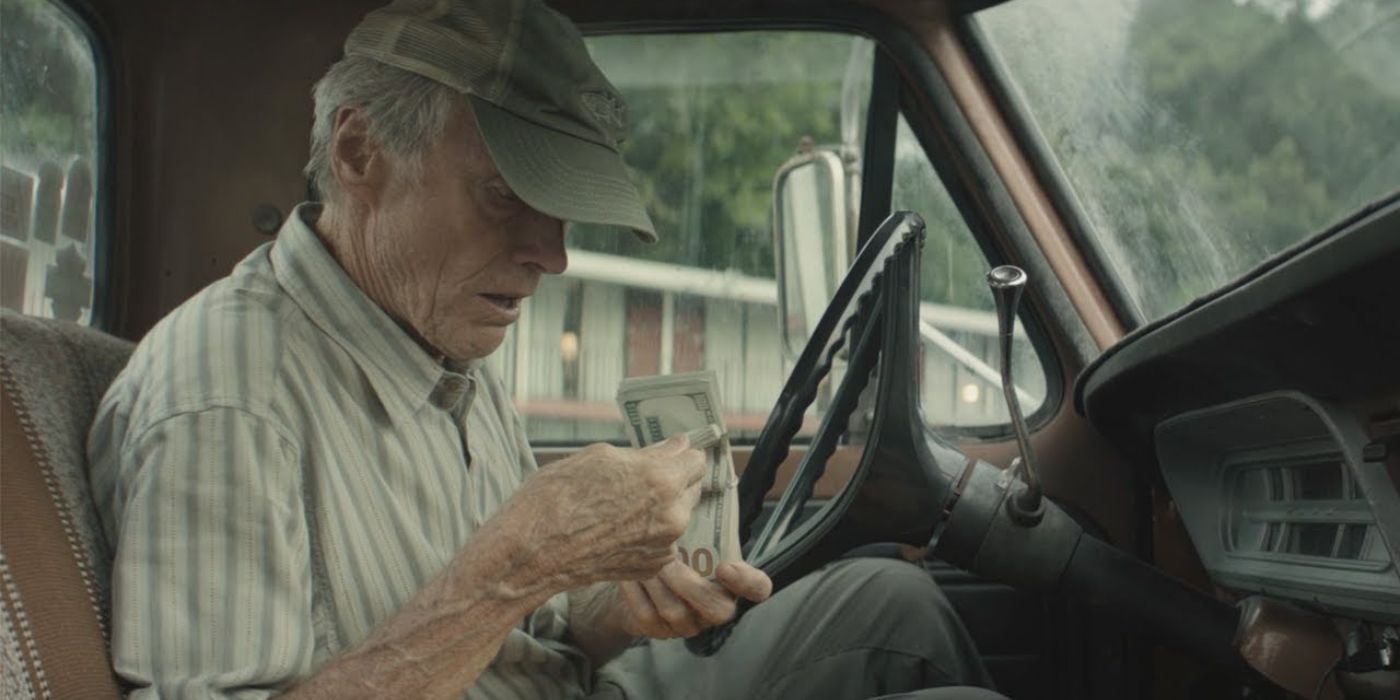Clint Eastwood’s The Mule true story is based on a World War II veteran who ultimately becomes the oldest — and one of the most prolific — drug mules in the history of the United States. Eastwood stars as Earl Stone with Bradley Cooper as DEA Special Agent Colin Bates, hot on his tale. With a supporting cast including Laurence Fishburne, Michael Peña, Ignacio Serricchio, and Dianne Wiest, The Mule follows a horticulturist and Korean War veteran who earns money transporting drugs after his business goes under.
In Clint Eastwood’s The Mule, Earl Stone was once a prominent member of the horticulturist community and an award winner thanks to his daylilies, but the widespread adoption of the internet forced him to close down not only lose his business but his home as well. But because he’s a cautious driver who’s never been pulled over in his life, he’s recruited to deliver drugs through Illinois for a cartel. Although he’s successful, he’s eventually caught by the DEA and sentenced to prison. All of this was inspired by the New York Times article “The Sinaloa Cartel’s 90-Year-Old Drug Mule”, which chronicles the investigation into the drug courier with quotes from the federal agent who arrested him.
What Is The Mule True Story?

In The Mule, Eastwood’s Earl Stone is based on Leo Sharp, who was known within the Sinaloa Cartel as El Tata. Sharp was an aging World War II veteran who became a pioneering horticulturist after his airline business failed, particularly working with daylilies. But when that business started to fall by the wayside, too, he was recruited into drug trafficking and was so good at it that he became somewhat of a myth within the cartel. In the end, he was arrested by the DEA and sentenced to three years in prison, of which he served one. Leo was released from prison in 2015 because he was terminally ill, and he died in 2016 at the age of 92.
Cooper’s Agent Bates is based on real-life DEA Special Agent Jeff Moore, who caught Sharp in 2011. While Stone’s arrest in The Mule was quite dramatic (for obvious reasons), Sharp’s arrest happened practically the same way, being caught on an interstate highway while driving a Lincoln pickup truck. After being arrested, Sharp pleaded guilty to the charges but attempted to avoid actual jail time by offering to pay his fine by growing Hawaiian Papayas for the US government. Stone, meanwhile, fully accepted responsibility in the film. In both cases, Sharp/Stone was able to maintain his daylily farm while in prison.
What The Mule Changed About Leo Sharp When Creating Earl Stone

In The Mule true story, Eastwood’s Stone is also a war veteran-turned-horticulturist who turned to drug-running after his business went south, but rather than having fought during World War II, the character is supposed to be a Korean War vet. Interestingly, though, Stone makes several remarks about Nazis, particularly when talking to Serricchio’s character. Given the timeline of The Mule, it makes sense that the film moved up the war from WWII to the Korean War in order to retain the character’s age.
While he was transporting drugs for the cartel in The Mule true story, Stone also went by the codename Tata. While The Mule is inspired by a true story, there are obvious changes to the narrative. Eastwood’s Stone is purely fictional, and how he lived his daily life is something that was conjured up for the film. Only the crux of the true story remains, which is that Sharp was an elderly war veteran who began transporting drugs across the Midwest after his flower business collapsed. On top of that, the estranged wife, his daughter, and his granddaughter from The Mule were entirely fictional to add drama to the story. Leo Sharp did have three kids in real life.
Other things in the movie were changed from The Mule true story on the surface level, with the names of certain characters changed and Sharp’s home city became Chicago instead of Detroit. Eastwood also changed a lot of what happened on the road, since there was no way of knowing what happened when Sharp was by himself. “We don’t know what he incurred when he was on the road doing all these trips,” Eastwood said (via USA Today). “He was able to get his farm out of hock and live a rather odd life.“
The Mule Put A More Positive Spin On Leo Sharp’s Career

The biggest change from The Mule true story was that the movie showed him only going on a dozen runs in total over the course of several months. In reality, Stone ran drugs for 10 years as one of the biggest couriers for the cartel. This likely was the cause of his prison sentence, even at the age of 90. “He got paid about a thousand dollars per kilo he was delivering and his normal load was about 250 kilos to Detroit,” revealed prosecuting attorney Christopher Graveline (via USA Today). “People should realize it was fictionalized from what was actually occurring with Leo Sharp.”
However, in both versions, Stone/Sharp spent much of his money helping other people, almost like a modern-day Robin Hood. However, the real Sharp was not as innocent as the fictionalized version, as Sharp’s lawyer told the New York Times for the story that influenced the film, “He has Mexican fellas working on the farms. They happen to know people who introduced him to other people who asked him if he wanted to get involved in something.” Sharp passed away shortly after he was released from prison due to his deteriorating health. While it’s fair to presume the same fate befalls Eastwood’s Earl Stone at the end of The Mule, the film leaves that part of The Mule true story ambiguous.




